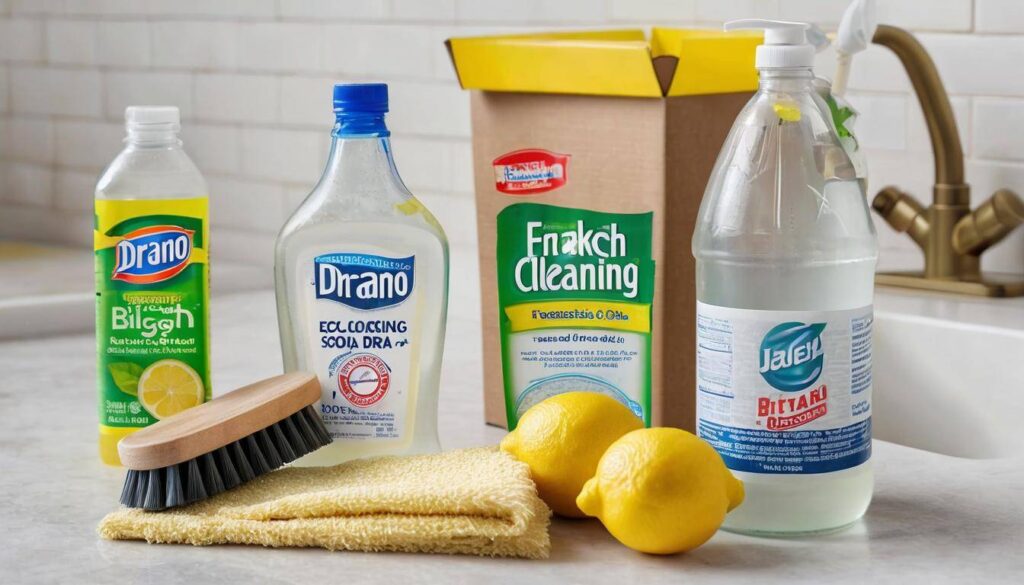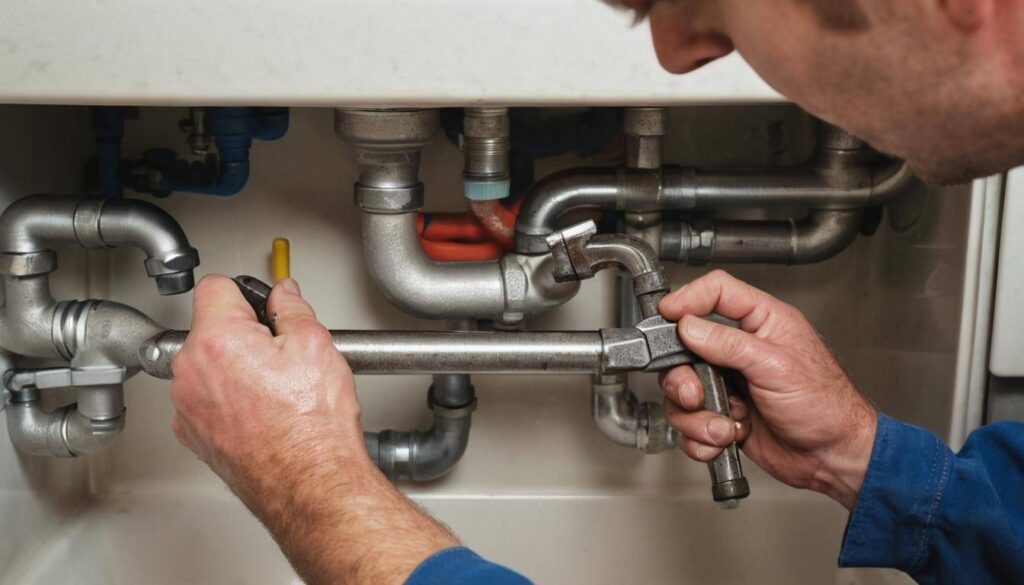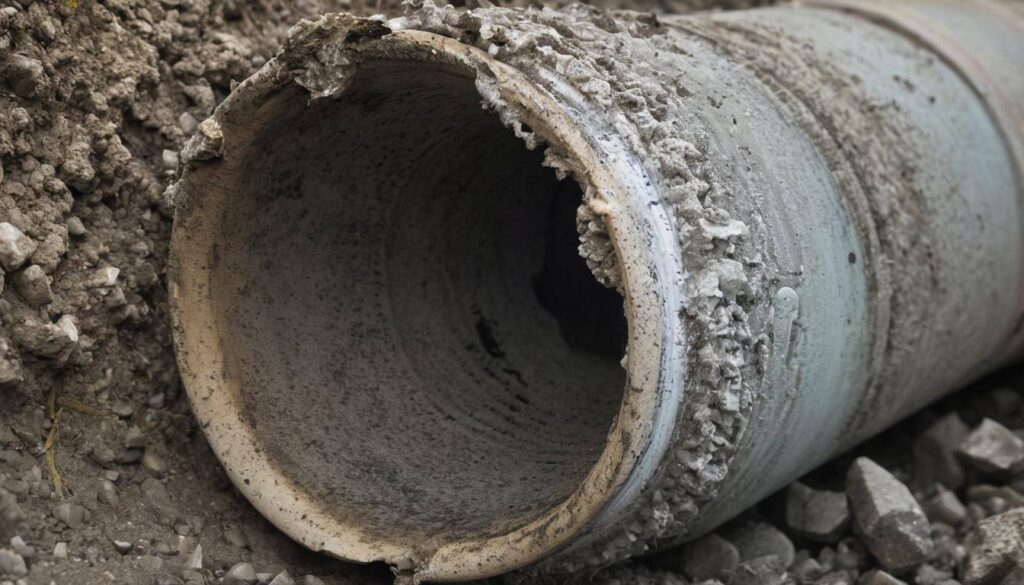What Causes Pipes to Freeze and Burst: Prevention and Repair Tips
Pipes freeze when there is a drastic drop in temperature, causing water inside them to freeze, in turn leading to undue pressure build-up. This is commonly seen when temperatures fall below 32°F (0°C), particularly in areas of your home that lack adequate insulation or heating, like basements, attics, and walls touching the outdoors. Often, this pressure proves too much for the pipe walls which then burst causing potential water damage and even flooding. You might not expect that copper, PVC, and PEX pipes all stand equal chances to freeze. Even the age of your house matters; older homes with outdated insulation are high-risk zones. Get ready to delve deeper into this frozen predicament!
The main causes of frozen and burst pipes are exposure to cold air, lack of insulation, and temperature drops below freezing. It’s important to take preventative measures such as insulating exposed pipes and allowing faucets to drip during extremely cold weather to prevent this issue.
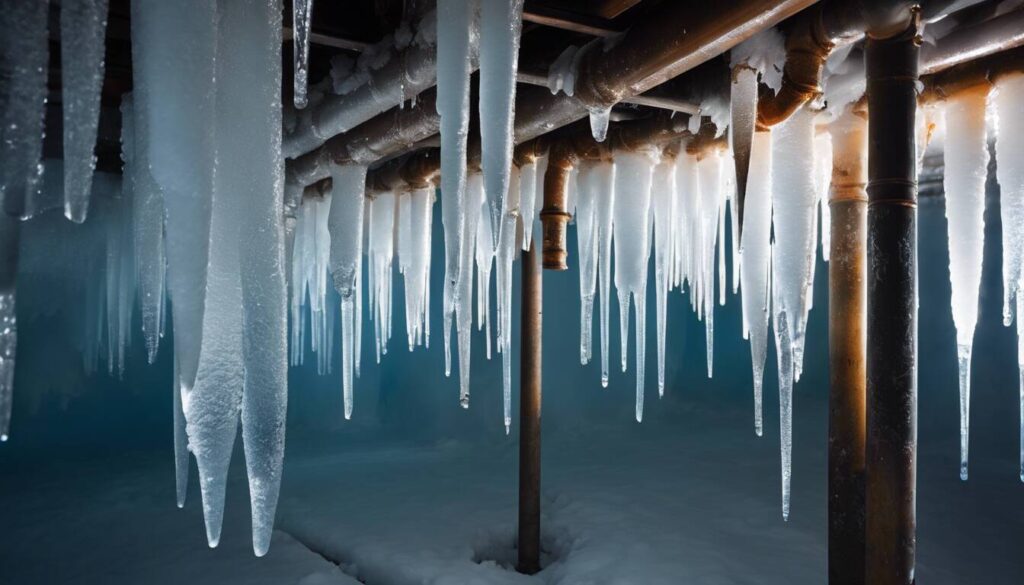
Reasons Behind Pipe Freezing
Picture this: it’s the dead of winter, the temperature outside is dropping, and as you shiver under blankets indoors, your pipes are feeling the chill too. When the air around the pipes gets too cold—below 32°F (0°C)—it turns the water inside them into ice. Now, we all know that water expands as it turns into ice, right? This expansion causes a buildup of pressure within the pipes, and if there’s too much pressure, it can cause the pipes to burst.
It’s like trying to squeeze too much toothpaste out of the tube at once—the pressure causes a rupture and before you know it, there’s a mess.
But why do some pipes freeze while others don’t? Insufficient insulation, inadequate heating, and exposure to severe cold are central reasons behind pipe freezing. Let’s explore each of these factors for a deeper understanding.
Insufficient Insulation
Insulation acts like a warm blanket for your pipes during cold weather. It prevents them from losing heat and keeps the surrounding temperature stable. Pipes that are not properly insulated or exposed to outdoor or unheated areas, such as attics or basements, are more susceptible to freezing. When these pipes are not adequately shielded from the elements, they become vulnerable to cold temperatures, increasing the risk of freezing.
Inadequate Heating
Imagine snowflakes falling peacefully outside while inside your home, not all areas are receiving enough warm air. Just as you want every corner of a room to be cozy and comfortable, you need every part of your home to be heated evenly too. If some parts of your house aren’t being heated properly due to closed vents or other heating system issues, pipes in these chilly zones can freeze up quicker since they’re not benefiting from the warmth.
So, now that you understand why pipes freeze and burst, you can better appreciate why it’s so important to ensure proper insulation and heating—let’s not forget prevention is always better than repair!
Understanding what causes pipes to freeze is crucial in preventing potential damage. Now, let’s shift our focus to identifying the common types of pipes that are likely to freeze and burst.
Common Types of Pipes Likely to Freeze and Burst
Pipes act as the veins of your home, carrying water and maintaining proper circulation. However, just like our veins, they are prone to damage when exposed to extreme conditions. The pipes most likely to freeze and burst are those in unheated areas such as basements, attics, and crawl spaces, as well as those located on exterior walls. These tend to receive less heat and are more susceptible to the effects of low temperatures.
If your home in Calgary has copper, PVC (polyvinyl chloride), or PEX (cross-linked polyethylene) pipes, you’re at risk. While copper is a popular material due to its durability and reliability, it conducts heat very well, which means it’s quick to lose heat in colder temperatures. PVC and PEX pipes have their strengths but are equally susceptible to freezing. Even though PEX pipes are more flexible than copper, making them resistant to bursting in many cases, they can still freeze if not properly protected from low temperatures.
In older homes with outdated or poorly insulated plumbing, the risk is significantly higher. Such homes often have pipes close to exterior walls without enough insulation. Without adequate protection from the cold, these materials don’t stand a chance against plummeting temperatures.
Proper insulation of vulnerable pipes is crucial to avoiding bursts during freezing weather. Adding insulation can be a lifesaver for your plumbing system—just like putting on a coat when it’s cold outside.
By understanding the types of pipes that are at higher risk of freezing and bursting, homeowners can take proactive steps to protect their plumbing from the potential damages caused by freezing temperatures.
As we become more aware of the risks associated with specific pipe materials and insulation inadequacies, let’s now delve into preventive measures focused on insulation techniques and heaters.
Preventive Measures: Insulation Techniques and Heaters
Insulating your home’s vulnerable pipes is a crucial step in preventing freezing and bursting. The added layer of insulation helps maintain the pipes’ temperature above freezing, reducing the risk of them succumbing to icy temperatures.
Insulation Methods
Using foam pipe insulation sleeves or heat tape to wrap vulnerable pipes is a highly effective technique, especially for those located in unheated areas or near exterior walls. The foam insulation sleeves act as a cozy blanket for the pipes, shielding them from the harsh cold. This method not only mitigates the risk of freezing but also provides an added layer of protection against bursting.
Heat tape, also known as heating cable, can be wrapped around the pipes to provide a steady supply of warmth. This is particularly useful for pipes located in basements, attics, or crawl spaces where the ambient temperature can drop significantly. The heat tape can be thermostatically controlled to activate when temperatures plummet, ensuring that the pipes remain at a safe and consistent temperature.
Space Heaters
In extremely cold conditions, employing space heaters in areas with high-risk pipes can provide additional warmth and prevent freezing. However, it’s crucial to use space heaters responsibly and safely.
For instance, placing a space heater near exposed plumbing in a drafty area can offer targeted warmth to stave off freezing. Additionally, using a space heater in an unheated garage where water supply lines are present can help prevent potential damage caused by extreme cold snaps.
Remember, safety is paramount when employing space heaters. Always keep flammable materials at a safe distance from the heater, ensure proper ventilation to avoid carbon monoxide buildup, and never leave a space heater unattended.
By embracing insulation techniques and utilizing space heaters responsibly as preventive measures against freezing and bursting pipes, you empower yourself to proactively guard against costly damage and inconvenience resulting from plumbing mishaps during colder months. Ensuring your pipes are adequately insulated and protected with heaters sets the stage for understanding the impact of water pressure when temperatures plummet. Let’s explore how alterations in water pressure impact your plumbing infrastructure during cold weather.
The Influence of Water Pressure in Cold Weather
When water freezes inside a pipe, it creates an obstruction that prevents the continuous flow of water. Due to this blockage, the water becomes compressed and tries to expand, leading to a significant increase in pressure within the pipe.
It’s important to note that the increase in pressure due to freezing can be substantial, especially if the blockage is not relieved quickly. This increased pressure can cause the pipe to burst or crack, resulting in potential water damage to your property.
Think of it this way: When water transforms into ice inside a confined space like a pipe, it exerts tremendous force on the walls of the pipe as it expands. This force is what causes the high water pressure within the pipes.
Consider a garden hose left outside during a cold winter night. If there’s water trapped inside and it freezes, the hose might swell up and develop weak spots due to increased internal pressure. The same concept applies to the interior pipes in your home or building.
Some may wonder why this matters—well, knowing how increasing water pressure due to freezing can lead to pipe bursts drives home the importance of taking preventive measures seriously. It’s not just about preventing inconvenience; it’s about avoiding potentially costly repairs and property damage.
Understanding the relationship between freezing water, pressure build-up, and pipe bursts underscores the need for proactive actions such as maintaining adequate insulation and allowing faucets to drip during cold weather to alleviate pressure within the pipes. These preventive measures can help mitigate the risk of pipe bursts and protect your property from water-related damage during freezing temperatures.
Having understood how freezing water influences pressure within pipes and why it’s crucial to take preventive measures to address this issue prepares us for identifying and thawing frozen pipes.
Identifying and Thawing Frozen Pipes
When the temperatures drop, it’s vital to keep an eye out for signs of frozen pipes. The most obvious clue is reduced or no water flow from your faucets, or strange odors coming from your taps. You may also notice frost accumulation on visible pipes, indicating that they are freezing over.
Signs of Frozen Pipes:
- Reduced or no water flow from the faucets
- Frost accumulation on visible pipes
- Strange odors resulting from trapped water
Once you’ve identified the issue, it’s crucial to act quickly and carefully to thaw out the frozen pipe before it causes any further damage.
Thawing the frozen section of the pipe requires precision and patience. Using a hairdryer, heating pad, or towels soaked in hot water are all effective techniques. When using these methods, start from the end closest to the faucet and work toward the blockage. This prevents any trapped steam from causing pressure build-up, which can result in bursting.
Thawing Techniques:
- Use a hairdryer, heating pad, or towels soaked in hot water
- Start from the end closest to the faucet and work toward the blockage
It’s important to remember not to use any open flame or high heat source directly on the pipes as it could cause damage or even start a fire. Always handle thawing with care and avoid quick fixes that may cause irreversible damage.
Just like slowly melting an ice cube in warm water, slow and steady is key to avoiding any pressure build-up that could potentially lead to a burst pipe. Preventing this disaster is just as important as fixing the issue when it happens.
Identifying and thawing frozen pipes promptly is essential in preventing costly repairs and potential damage to your home. It’s crucial to understand both the signs of frozen pipes and effective thawing techniques to keep your plumbing system functioning smoothly in cold weather.
As we’ve discussed measures to identify and thaw frozen pipes, next, we’ll delve into the critical steps required to repair burst pipes and mitigate potential damage.
Steps to Repair Burst Pipes
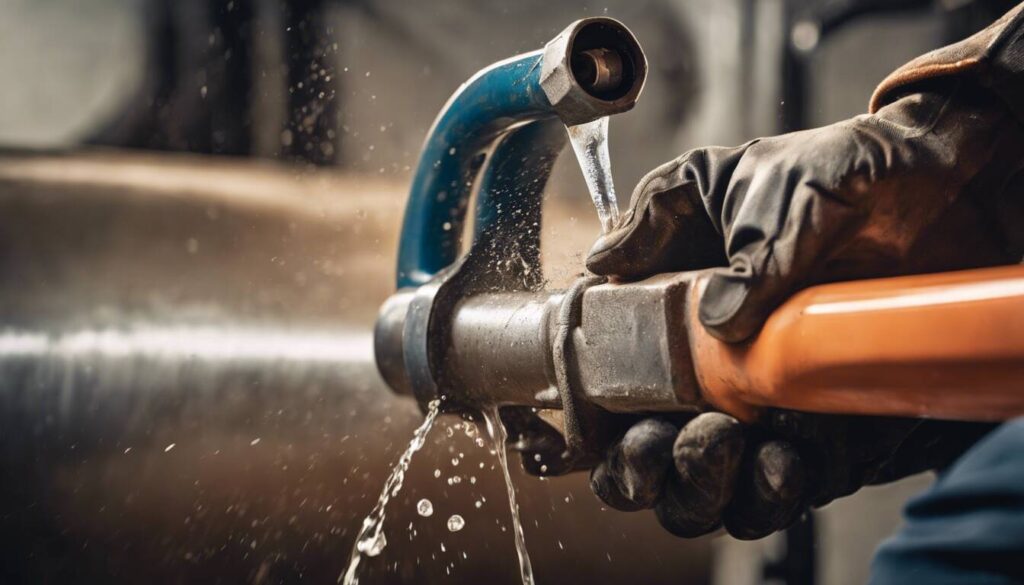
A burst pipe is every homeowner’s nightmare. When it happens, quick and decisive action is crucial. Here are the key steps to repair burst pipes effectively and limit water damage.
Turn Off Water Supply
As soon as you notice a burst pipe, go straight to the main water supply shut-off valve and turn it off. This step is critical as it stops the flow of water and helps prevent further flooding and water damage. Often, the shut-off valve is located near the water meter or where the main line enters your home.
After turning off the water supply, open all faucets to drain the remaining water in the system. This will help reduce pressure in the pipes and minimize any further leaking or spraying of water.
Keep an eye out for any electrical outlets or appliances in the affected area. Water and electricity don’t mix well, so exercise extreme caution if electrical connections are at risk of exposure to water from the burst pipe.
Repair or Replace
Assess the damage and consider whether it’s something you can handle yourself or if it’s a job for a professional plumber. Small leaks or bursts may be manageable with DIY repairs, but larger or more extensive damage should be addressed by a qualified expert.
Regardless of whether you decide to handle the repairs yourself or call in a professional, always prioritize safety. If you’re not confident about your plumbing skills, it’s best to leave it to someone with expertise. A professional plumber can accurately diagnose the issue, repair the damaged section efficiently, and provide preventive measures to avoid recurrence.
Professional Expertise
Emphasizing your company’s expertise in identifying, preventing, and repairing frozen and burst pipes positions our team as reliable experts in the field. Burst pipes can lead to significant property damage, and our skilled professionals are equipped to handle these situations effectively. Our goal is not just to fix the problem but also to provide expert insights on prevention strategies moving forward.
If you’re unsure about how to proceed with repairing a burst pipe or need assistance with preventive maintenance, don’t hesitate to reach out to our experienced team for guidance and support. Swift action and expertise can make all the difference in mitigating damage and ensuring the long-term integrity of your plumbing system.
When it comes to burst pipes, quick response and expert care can save you time, money, and hassle. Remember, your reliable partners at My Calgary Plumber are here to assist you with any plumbing concerns.

